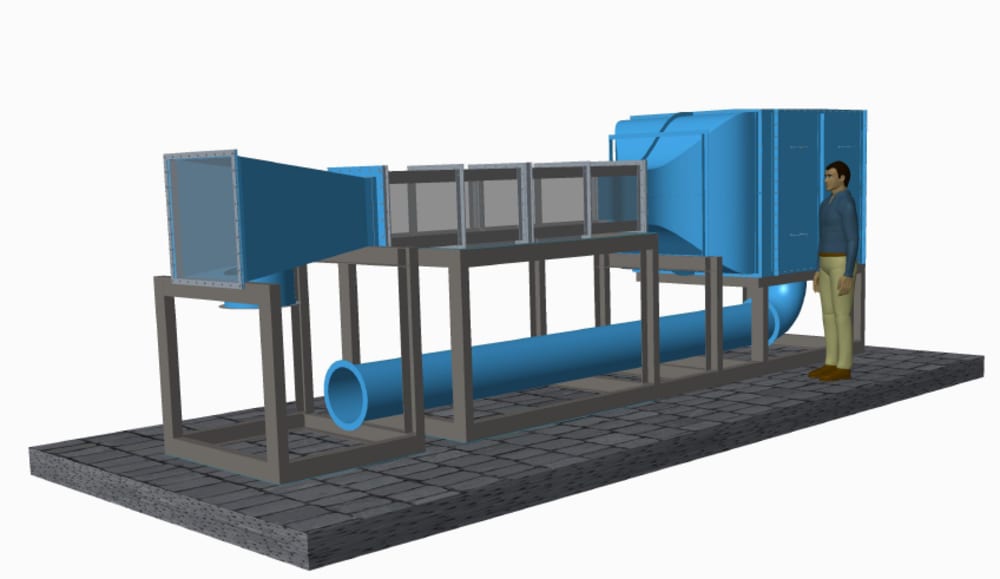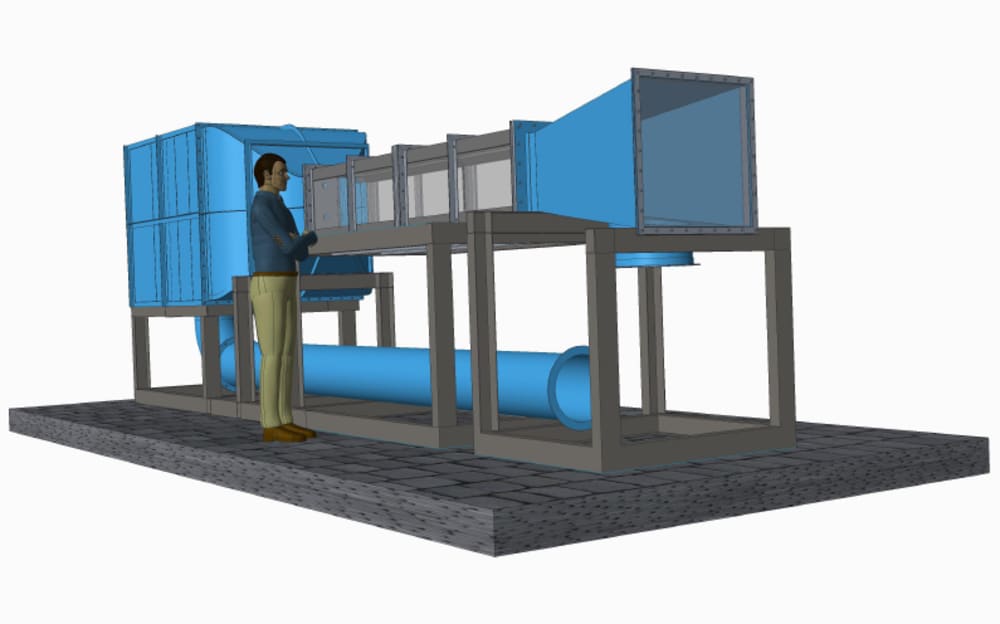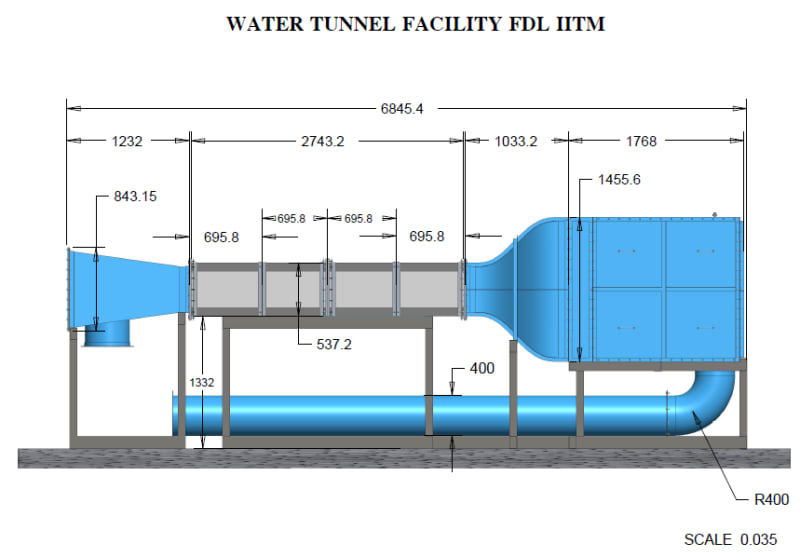Water tunnels have been traditionally used for flow-visualizations in aeronautical applications and more recently in bio-mechanical studies such as swimming of aquatic animals . Their use has been instrumental in understanding important aspects of fluid flows such as instabilities, vortex shedding, boundary layer stability and transition, and so on.
The water tunnel facility would be a work-horse for flow investigations in boundary layers, stability and transition, wakes, vortex shedding, jet-in-cross-shear-flows, flow over orographic models etc. The test-section size is planned to be 1.5 ft x 1.5 ft x 9 ft. While water channels have simpler construction, the flow speeds are limited due to the waves that develop on the free surface beyond speeds of the order of few cm/s. Water tunnels, on the other hand, can have considerably larger flow speeds of the order of 1.6 m/s. However, since the tunnels are completely closed conduits, they are pressurized everywhere and therefore the construction is heavier compared to that of channels.
The water tunnel under development is aimed to be a combination of the advantages of tunnel and channel thus increasing flow speeds without increasing the weight excessively. The water tunnel facility wherein water is recirculated in a closed loop using a suitable pump. The pump, return pipeline, settling chamber (with honeycomb and screens for flow conditioning), contraction and test-section all run full of water. The diffuser decelerates the flow by increasing cross-section. The pump fits between diffuser outlet and pipeline entry.
The Figure shows the rendered 3D CAD model from PTC Creo Parametric 3.0; Water Tunnel Facility proposed at IITM, Pune, India. The material used is mostly SS304 to prevent corrosion. The estimated weight of this facility is as follows :
1)Settling Chamber = 4.41 tons
2)Contraction = 0.78 tons
3)Test Section = 1.284 tons
4)Diffuser = 0.56 tons
5)Pipe Line = 1.085 tons
6)Pump + Motor = 0.55 tons
Total weight = 8.669 tons
**Important Components and Characteristics are as follows:
1) Test-section: 1.5 ft x 1.5 ft x 9 ft.; octagonal cross-section; made of clear cast acrylic sheets.
2) Contraction: Type = 3D; Area ratio = 9:1 ; Length = 4.73 ft.
3) Settling Chamber: Length = 2045 mm.
Like this entry?
-
About the Entrant
- Name:Sujit Sonone
- Type of entry:individual
- Software used for this entry:PTC Creo Parametric 3.0, ANSYS workbench, CATIA V5 R19
- Patent status:pending








